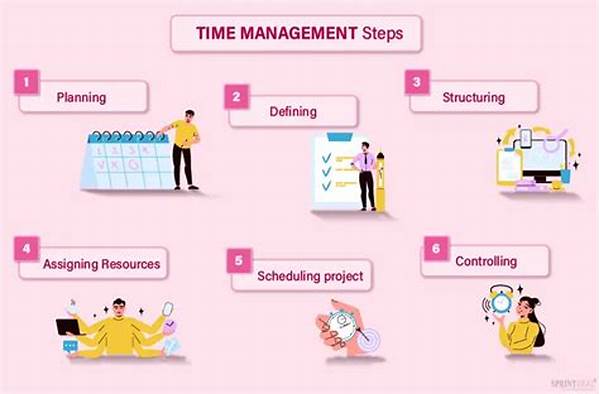- H1: Project Time Management
- H2: Mastering the Art of Project Time Management
- H2: The Essentials of Project Time Management
- H3: Tools and Techniques in Project Time Management
- UL & LI: Details about Project Time Management
- H2: Enhancing Project Time Management Efficiency
- H3: Advanced Strategies in Project Time Management
H1: Project Time Management
In the fast-paced world of business and entrepreneurship, juggling multiple tasks and meeting deadlines can feel like an acrobat walking a tightrope while juggling flaming torches — it’s exciting but risky. Managing time effectively is crucial, and this is where Project Time Management comes into play. Imagine a world where every project meets its deadline, every task is checked off efficiently, and stress is a thing of the past. Yes, it sounds like a fantasy dreamt in a far-off utopia, but with proper time management strategies, it can become a reality. Projects are like living organisms; they thrive on attention and resources. Giving them the right amount of your precious time is like feeding a plant just the right amount of water and sunlight—not too much, not too little, just right.
Read More : Time Management Games
In our ever-evolving global marketplace, businesses and individuals alike are consistently compelled to do more with less. “More” in terms of complexities and competition, and “less” in terms of time and resources. It’s a tough gig but project time management serves as the GPS to guide us through the potential chaos. By harnessing the power of efficient time allocation, projects not only achieve their objectives but do so with finesse and flair. Think of it as transforming a clunky, old bicycle into a sleek, shiny new motorcycle. The journey from Point A to Point B becomes not only quicker but also more enjoyable.
Whether working solo or managing a team, the savvy application of time management can transform even the seemingly irrelevant project components into the critical path of success. Effective time management fuels productivity, enhances satisfaction and keeps you ahead of the curve instead of perpetually chasing it. How often have you heard someone lament, “If only I had more time”? News flash: we cannot manufacture time. However, through mastering project time management, we can certainly maximize its utility, making every tick of the clock count toward achieving greatness.
H2: Mastering the Art of Project Time Management
Project time management is akin to mastering an art form; it demands attention, patience, and sometimes a dash of humor to make the tough days bearable. It’s about understanding the nuances of your project, the strengths of your team, and the requirements of your tasks. One wrong move and the domino effect could topple your entire timeline. But with meticulous planning and the adoption of proven strategies, you can keep those dominoes standing proud. Begin by setting clear, achievable goals. Perhaps you’re orchestrating a Broadway show or planning a small office renovation; either way, setting realistic deadlines ensures everyone knows precisely what they’re working towards. Break down your projects into manageable tasks and create a timeline that works for you, not against you.
Feel overwhelmed by endless to-do lists? Prioritize! Not everything needs to be done yesterday. Sometimes, distinguishing between what’s urgent and what’s important is like discerning between a full-blown siren and a distant doorbell. The more adept you become at recognizing these differences, the more control you’ll have over your schedule. And who doesn’t want to feel in control of their destinies?
Lastly, remember that nobody is an island. Leverage team talents through collaborative project time management tools and techniques. From Kanban boards to Gantt charts, there’s no shortage of tools to keep you on top of everything without descending into chaos. If you can mend a frayed timeline or rescue a floundering project with confidence and poise, not just you but your entire team will feel like superheroes. Perhaps just without capes unless that’s your kind of thing.
—
H2: The Essentials of Project Time Management
Navigating the wild waters of project time management requires the right vessel for smooth sailing. It’s not just about setting sail with a vague sense of direction; it’s about plotting specific coordinates, knowing how to adjust your sails, and dancing with the wind when it changes direction.
H3: Tools and Techniques in Project Time Management
Effective project time management boils down to employing the right tools and techniques suited to your team’s dynamics and project needs. From using digital platforms like Asana or Trello for task tracking to adopting the Pomodoro Technique for time boxing, the tools at your disposal are as varied as they are useful.
—
UL & LI: Details about Project Time Management
H2: Enhancing Project Time Management Efficiency
To make these elements sing together like a well-rehearsed orchestra, you need precision and practice. Start by analyzing past project performances, identify pitfalls, and adapt your strategy. One word: Improvement. With each project, strive to fine-tune your approach for seamless execution.
H3: Advanced Strategies in Project Time Management
Advanced strategies involve leveraging AI tools for predictions and outcomes, as well as adopting agile methodologies for flexibility. After all, a project manager is only as good as the tools they wield the strategies they employ, and the team they lead.
In conclusion, project time management isn’t simply about watching the clock. It’s a dynamic process of strategic planning, continuous adjustment, and creative execution. Whether you’re leading a small team or orchestrating a large-scale project, mastering this skill can be your key to success, allowing you to work smarter, not harder.


